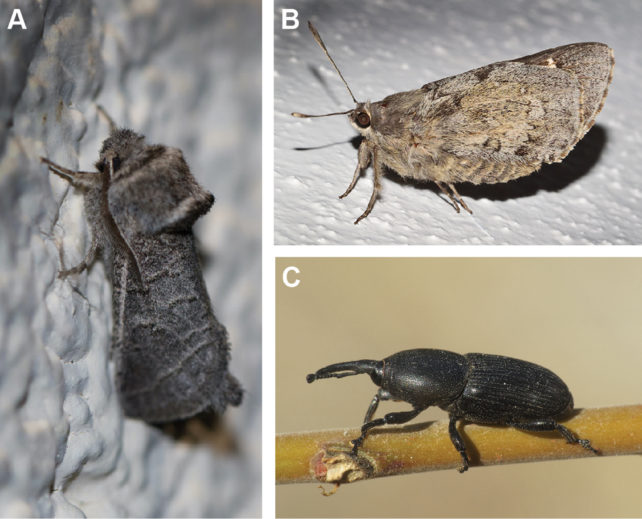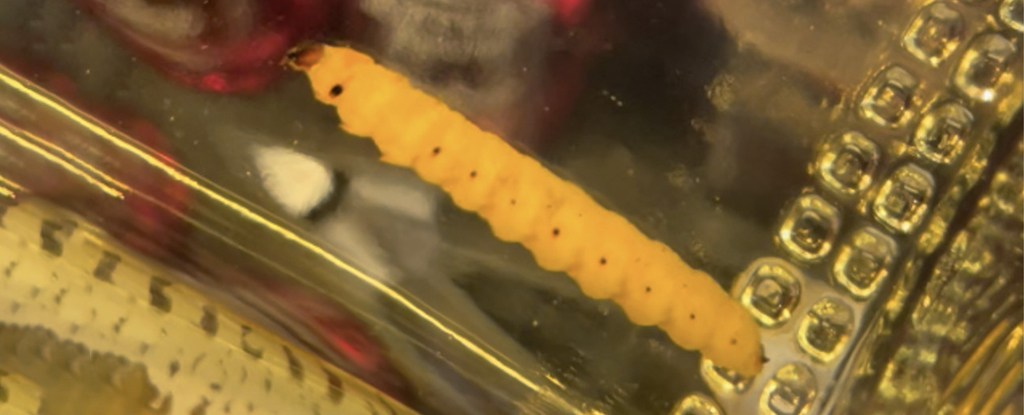Products You May Like
Alcohol distilled from the heart of the agave succulent is often packaged with what many people would consider an icky curiosity. Floating within some mezcal bottles is a worm-like baby insect.
Since its addition to the traditional Mexican drink in around the 1940s, the taxonomic identity of the alcoholic-soaked grub we dare not consume has never been confirmed.
A team of researchers have now conducted a DNA survey on larvae preserved in different brands of commercially available mezcal and unexpectedly discovered it is indeed just a single species that garnishes this beverage.
Guesses to the ‘worm’s’ identity previously range from butterfly, moth and/or weevil babies, all known pests to the agave plants. Historically, Mexican people eat the larvae of about 63 different insect species, with some believed to have health benefits including aphrodisiac properties.

A strong contender for the identity of the mezcal specimens was the caterpillar of the Tequila giant skipper (Aegiale hesperiaris), a butterfly that lays its eggs in the central leaves of the agave plant. When the caterpillars hatch they feast on the plant’s flesh.
Given the insect’s common name, it seemed like an obvious candidate.
Weevils are also particularly troublesome insects to have inside your agave, leading to up to 40 percent loss of harvests. Females inject their eggs into the trunk or exposed roots of the plant, producing young that eat the plant to death from the inside. Popping one of those grubs into your bottle would certainly show everybody who’s boss!
University of Florida entomologist Akito Kawahara and colleagues collected 21 specimens of preserved insect from commercial mezcal bottles between 2018 and 2022. While some of the animals were white, others were pinkish red. In spite of the subtle differences, all 18 of those successfully sequenced contained the DNA of a single type of insect: Comadia redtenbacheri.

Like the butterfly and weevil, this moth – found in Texas and Mexico – also lays its eggs (around 120 of them!) on agave plants for the caterpillar hatchlings to feed on the succulent’s stems and roots. Because they’re so numerous they can kill the plant. Harvesting these night flutterer’s offspring also kills the agave.
The moth larva’s relatively recent addition to non-tequila mezcal drinks was likely a marketing gimmick, although many myths surround this practice.
“While we believe our sampling is a solid representation of the breadth of mezcals that contain larvae It is possible that additional brands and varieties that we could not sample may contain larvae of other insect species,” Kawahara and team qualify in their paper.
These moth larvae are one of the most popular edible insects in Mexico. They are also added to other drinks and foods including as salts and other garnishes and have been sold for as much as US$200 per kilogram.
While a global shift towards eating more insects would have many benefits, we must be careful not to create other problems in the process. The growing demand for the moth is unfortunately leading to declines in their numbers. Some researchers are looking into farming C. redtenbacheri to protect the wild population.
This research was published in PeerJ.
